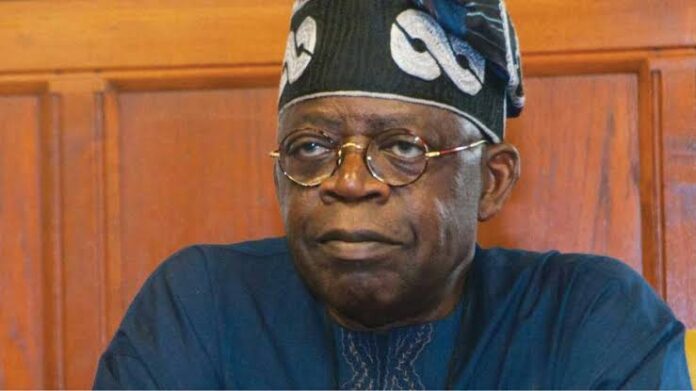Reforms That Don’t Reach the People
By Oladoja M.O
The Tinubu administration has unarguably embarked on a bold and unapologetic mission to retool Nigeria’s economy. From the abrupt removal of petrol subsidies to the floating of the naira, the unification of multiple FX windows, and most recently, the signing of the landmark Tax Reform and Fiscal Policy Bill, there is no denying that the government has chosen a macro-to-micro economic approach. That is, fix the big picture first, then let the gains gradually filter to the people.
And indeed, the “green lights” are beginning to blink. Global credit rating agencies such as Fitch and Moody’s have upgraded Nigeria’s outlook. Foreign investors are expressing renewed interest. Oil production is improving, FX liquidity is easing, and fiscal buffers are being rebuilt. From a purely macroeconomic standpoint, Nigeria appears to be reclaiming its place as a serious economy with a reform-minded leadership.
But there’s a contradiction that cannot be ignored: on the streets of Agege, Aba, Makurdi, and beyond, the economy is still red; red markets, red household budgets, red transport fares, and red faces of frustration. Prices have tripled in some cases. Wages have barely moved. Many can no longer afford their children’s school fees. Traders are losing capital to inflation. Food is fast becoming a luxury. Amid this hardship, Nigerians are asking the most honest, piercing question of the moment:
“If the economy is growing, why am I still shrinking?” “If the economy is growing, where is the growth in my pocket?”
This is not a question born out of ignorance. It is a legitimate cry that speaks to the disconnect between macroeconomic progress and microeconomic relief. Yes, the big numbers are looking better, but the lived realities of the majority are deteriorating. To understand this discrepancy, we must first understand the difference between macroeconomics and microeconomics.
Macroeconomics concerns itself with the national economy, things like GDP growth, inflation rates, budget deficits, and foreign exchange reserves. These are the indicators investors, multilateral organizations, and economic analysts watch. Microeconomics, on the other hand, deals with everyday realities; how much you earn, what you can buy with that income, whether your small business can survive, and whether prices of food, fuel, and medicine are manageable. In theory, macroeconomic stability should, over time, trickle down and improve microeconomic conditions. But in practice, especially in a country like Nigeria, that process is rarely smooth or automatic.
The truth is that reforms, especially big, structural reforms create what economists call a “lag effect.” That is, the pain comes first; the relief comes much later. Floating the naira made the exchange rate more transparent and investor-friendly, but it also instantly raised the price of imported goods. Removing fuel subsidy fixed a long-standing fiscal leak, but it also sent transport and food prices soaring. And because Nigeria imports a significant share of its consumption, inflation spiked, with devastating effects on the poor. Salaries have not caught up. Social safety nets are thin. Informal workers who make up over 60% of Nigeria’s labour force are largely left to fend for themselves.
Yet, this is the path the government has chosen. And it is important to say this clearly: choosing a macro-first approach is not inherently wrong. In fact, for a country like Nigeria, plagued by decades of financial mismanagement, it is even necessary. Fixing subsidies, unifying the exchange rate, and rebuilding fiscal credibility are long overdue. Every administration must work with the strategy it believes in, and this government has opted to “stabilize the roof before fixing the foundation.” That, in itself, is a policy choice one with clear upsides.
However, macroeconomic success without visible microeconomic impact is a hard sell to a hungry population. People don’t live in GDP. They live in garri, transport fares, and electricity bills. While international investors applaud the courage of reforms, local citizens are asking: where is the evidence that my own life is getting better?
To be fair, the administration is not blind to this concern. The recently signed Tax Reform and Fiscal Policy Bill is part of a broader effort to expand the tax net and capture the informal sector, both to raise revenue and bring more economic players into visibility. But again, for the everyday Nigerian, these reforms are abstract. What matters is how they translate into food on the table, money in the pocket, and hope in the future.
So, how do we build a bridge between this macro-level retooling and the micro-level reality of the people?
First, we must move beyond tokenistic interventions like cash transfers and instead design smart relief tools that tie micro-support to long-term productivity. For example, introducing community-based digital vouchers that support food or fuel purchases, but are redeemable only when tied to school attendance, digital payments, or participation in a training program, would ease the current pressure while also boosting the long-term human capital of the country.
Second, the government must decentralize economic adaptation. Nigeria is too diverse for a one-size-fits-all economic playbook. Establishing “Local Reform Chambers” committees made up of state governments, market leaders, and community associations can help interpret macro policies at a local level and propose area-specific interventions. If subsidy removal causes a shock in Zaria or Owerri, let those communities co-design their own response, be it cooperative transport schemes or communal food banks, funded partially by the government and partially by local actors.
Thirdly, data must become a feedback tool, not just a planning tool. The government should publish a monthly Macro-to-Micro Progress Report showing in clear terms how reforms are improving incomes, lowering costs, or reaching underserved communities. Let people see the path of change, even if it’s still under construction.
Finally, the government must actively invest in skills, tools, and local infrastructure. Don’t just train youths to code, train them to fix machines, install solar panels, manage cooperatives, and build homes. Make markets more productive with solar lighting, shared storage, and water access. These are the enablers that convert national growth into grassroots empowerment.
Conclusively, it is fair to acknowledge that the current administration is taking steps previous governments only danced around. The reforms are not without merit and frankly, not without courage. But reforms are not complete until they reach the people.
The Nigerian people are not impatient; they are simply in pain. And when they ask, “If the economy is growing, why is my pocket not?” they are not being unreasonable. They are asking for what every citizen deserves: a place in the progress. Now is the time to move beyond balancing spreadsheets and begin balancing lives. Because growth is only real when it is felt.
And no reform is complete until the people rise with the numbers.
Oladoja M.O writes from Abuja and can be reached at: [email protected]


